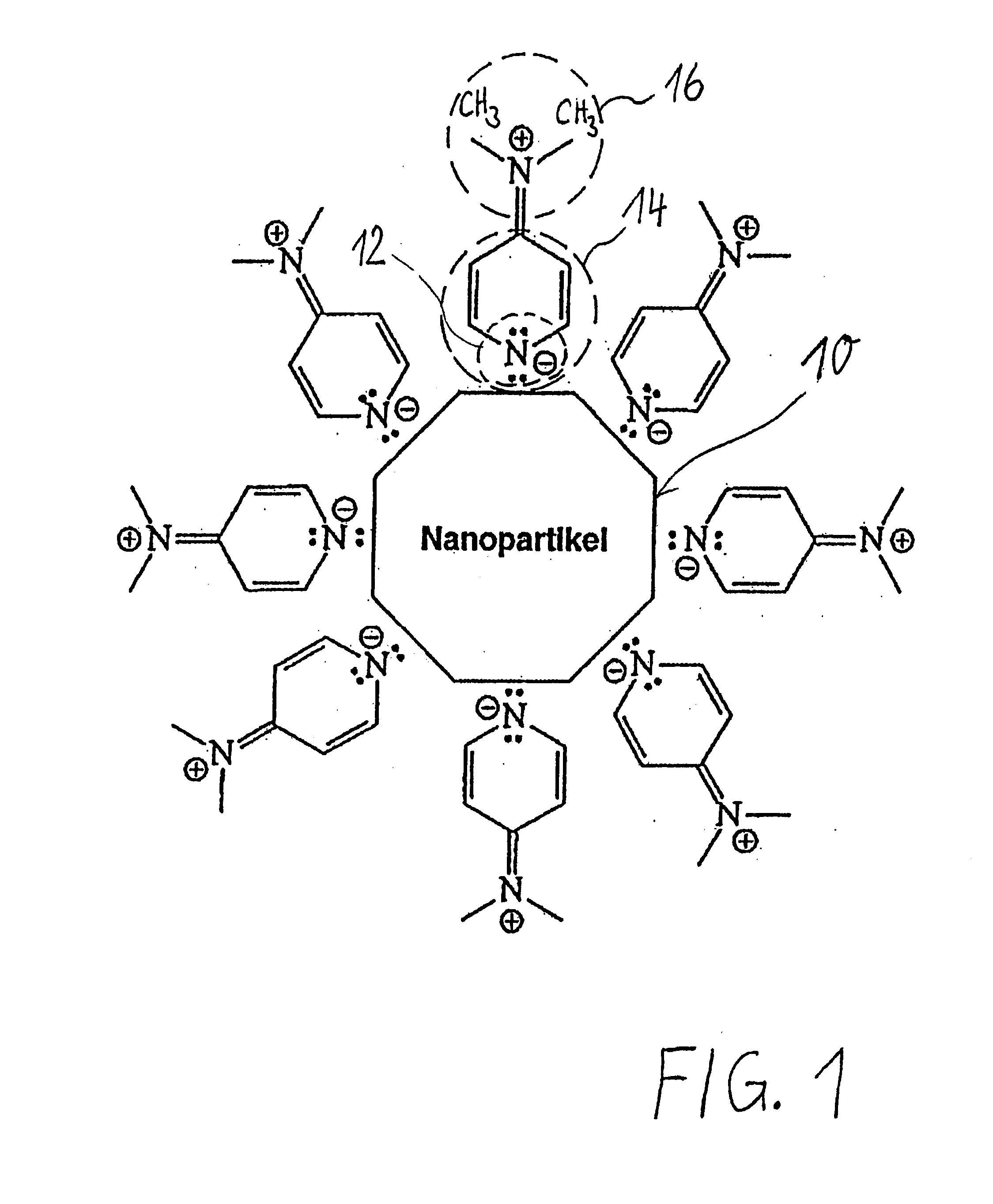Phase transfer of nanoparticles
- Summary
- Abstract
- Description
- Claims
- Application Information
AI Technical Summary
Benefits of technology
Problems solved by technology
Method used
Image
Examples
Embodiment Construction
[0086]FIG. 1 schematically shows in the center the surface 10 of a gold nanoparticle. The surface is drawn as a line having a smooth contour which is shown by way of example and purely schematically as an octagonal shape. The surface is shown in idealized form as a smooth surface, but is made up of individual gold atoms.
[0087] Eight DMAP molecules are shown schematically coupled onto the surface 10; of these, only one (the uppermost) is shown in greater detail in the interest of simplicity. Depending on the size of the phase-transferred nanoparticles, a considerably greater number of shell molecules are naturally arranged in the plane of the drawing. The description below applies likewise to the other DMAP shell molecules which are bound to the nanoparticles (including those located outside the plane of the drawing):
[0088] The endocyclic nitrogen (N) atom 12 of the pyridine ring binds, as constituent Y of the DMAP molecule used according to the invention, to the nanoparticle surfa...
PUM
| Property | Measurement | Unit |
|---|---|---|
| Ratio | aaaaa | aaaaa |
| Water solubility | aaaaa | aaaaa |
| Hydrophobicity | aaaaa | aaaaa |
Abstract
Description
Claims
Application Information
 Login to View More
Login to View More - R&D
- Intellectual Property
- Life Sciences
- Materials
- Tech Scout
- Unparalleled Data Quality
- Higher Quality Content
- 60% Fewer Hallucinations
Browse by: Latest US Patents, China's latest patents, Technical Efficacy Thesaurus, Application Domain, Technology Topic, Popular Technical Reports.
© 2025 PatSnap. All rights reserved.Legal|Privacy policy|Modern Slavery Act Transparency Statement|Sitemap|About US| Contact US: help@patsnap.com



